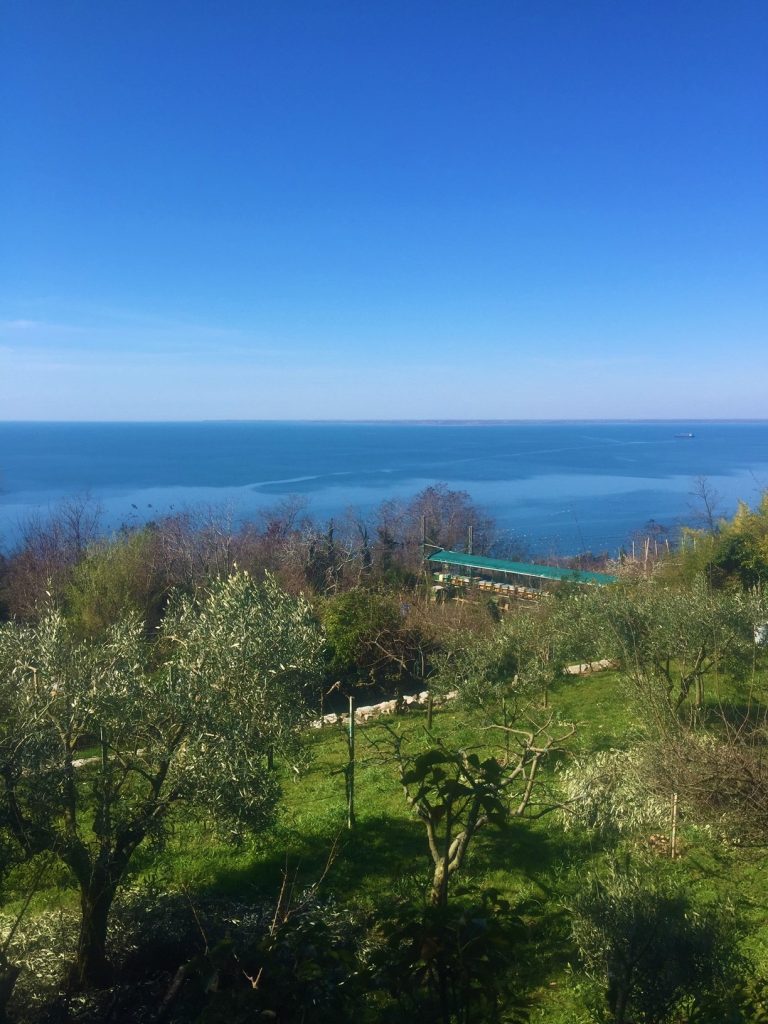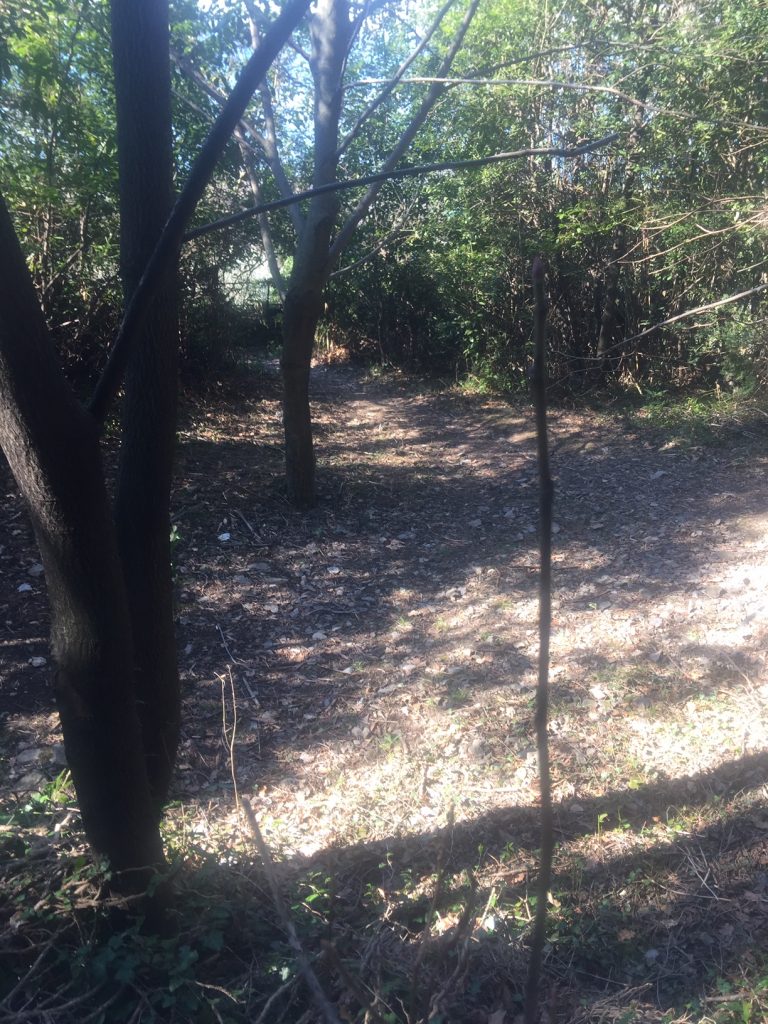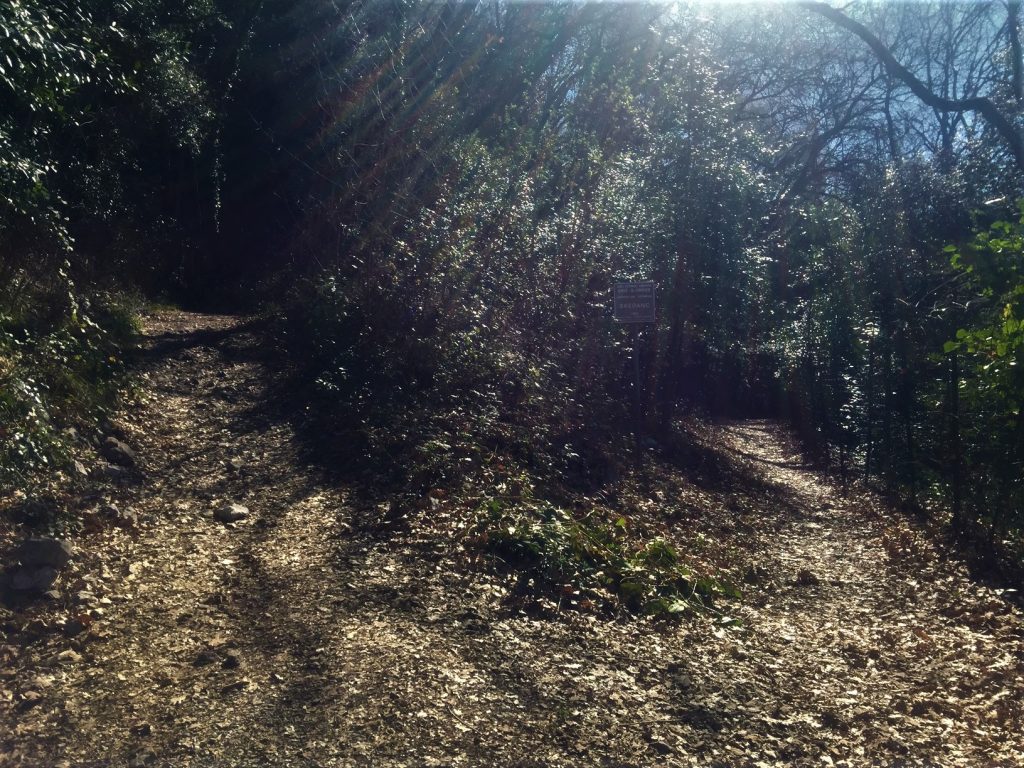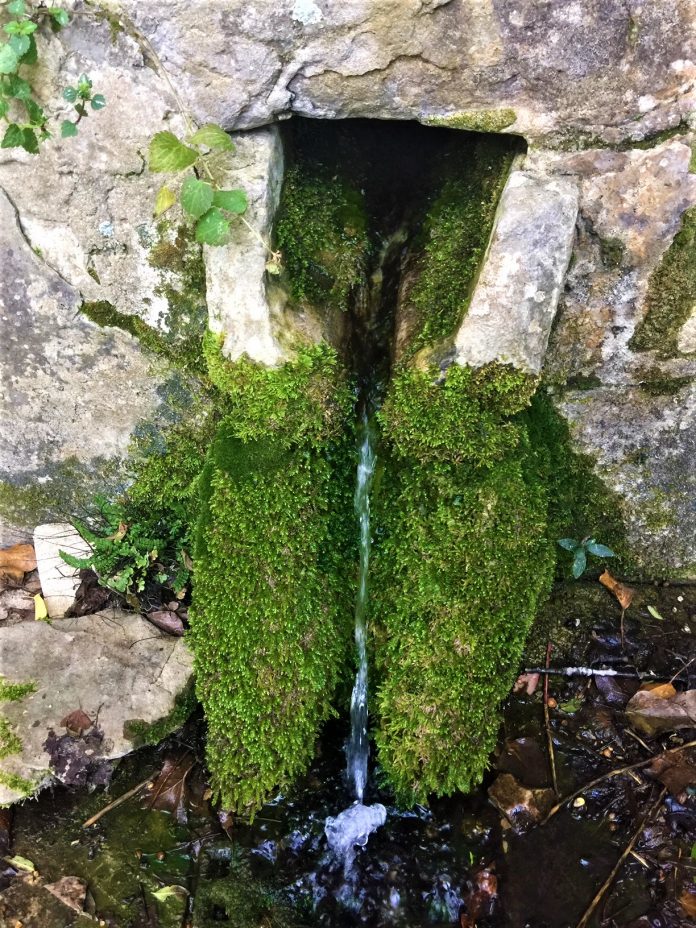by Alessandra Ressa
Hidden in the woods on the steep hill between Santa Croce and the sea flows an ancient water spring so pure and free from sediment that for centuries locals believed it to have rejuvenating effects.
What made this charming spring even more popular, according to a Triestine researcher Silvio Polli (1988), was the complete lack of minerals which made its water perfect for coffee. People walked the steep hill from Santa Croce and lined up with buckets and tanks to fill.
Everyone agreed that coffee prepared with this water was the best in town, which was also used for drinking and cooking. Until very recent times, due to its popular qualities, people from all over Trieste came to this spring to fill their bottles and tanks with this special water to brew coffee. Today it is used for the vineyards and vegetable gardens below.

Known as Skendanc or Skenderz, it is the only spring water that emerges halfway between the hill and the sea. It had been used for centuries by Santa Croce residents as there was no drinking water in that area of Carso. Later, when the aqueduct reached those communities, it was also used to water the old terraced vineyards below. Although the spring’s sign indicates 1835 as the date of the construction of the stone enclosure, the site was not mentioned nor mapped in any official papers until 1905.

The first to mention the spring in a document was a Triestine explorer and speleologist Eugenio Boegan. While mapping caves and underground waters in Carso, in 1905 he described the site and took measurements.
According to him, the spring that reached the surface was one of the five underground streams that from Carso flowed into the sea in a coastal area known as Randelli.
Skendanc was the name of the wooden area on the hill where the water gushed out. According to Boegan, and later to Polli, both temperature and flow remained constant throughout the year, with a stronger flow after abundant rains.

Two ladies watering daffodils in one of the terraced vineyards told me that there is a very old legend about that spring. The story tells about a young farmer girl that from Santa Croce would walk to Miramare to sell vegetables. While she was resting in shade, she experienced an apparition.
She saw the image of Virgin Mary under a big oak tree. In that same spot the tiny spring began to flow. I wasn’t able to find any evidence about this story, and, although the spring is located in a little flat clearance in the woods, the big old tree must be long gone. Along the unpaved road just below the spring there is a small altar dedicated to Virgin Mary, very similar to those you often encounter on mountain trails. I found this to be an unusual location for an altar.

It is not really clear whether the water is drinkable. I found an old photograph from the 1980s where a sign “not for drinking”, now gone, was attached to the wall. Its rejuvenating properties however were too attractive to me. I simply had to try it.
What a disappointment! It tasted of iron and moss, with a vague aftertaste of seaweed. Not exactly my idea of spring water. In addition, so far it has had no miraculous effects on my aging. Luckily, no unpleasant side effects either.

You can reach the spring from Prosecco village following the main trail in the direction of Vedetta Slataper, but then switch to the beautiful downhill path to via della Vitalba. You will not see any signs until you get to this point (see next picture) where you should take a narrow left.

Alternatively, from Prosecco you can follow the uneven old road to the Monastery of San Cipriano (yes, there is a monastery there as well) which eventually becomes via della Vitalba. It’s a beautiful, inspiring walk among vineyards once filled with precious grapes that made Prosecco wine famous all over the world. Towards the end of the via, about 50 meters from the windy road to Santa Croce village, you will see a narrow, dark trail to the right.

By the way, while it is true that the grapes of the popular Prosecco wine originated from the little Trieste village of Prosecco over 700 years ago, the main production moved to Veneto where it is now almost exclusively produced with the trademark name ‘Prosecco’. Some vineyards of Prosecco village, however continue to produce this ancient ribolla wine under a different name.






























Thanks for this interesting article! The Primorski dnevnik newspaper has published today an article about this page. They also have been unable to confirm the story of the Virgin Mary’s apparition, no one among the older people living in the nearby zone has ever heard about this story: https://www.primorski.eu/trzaska/kriz-ni-postal-medjugorje-MM806439